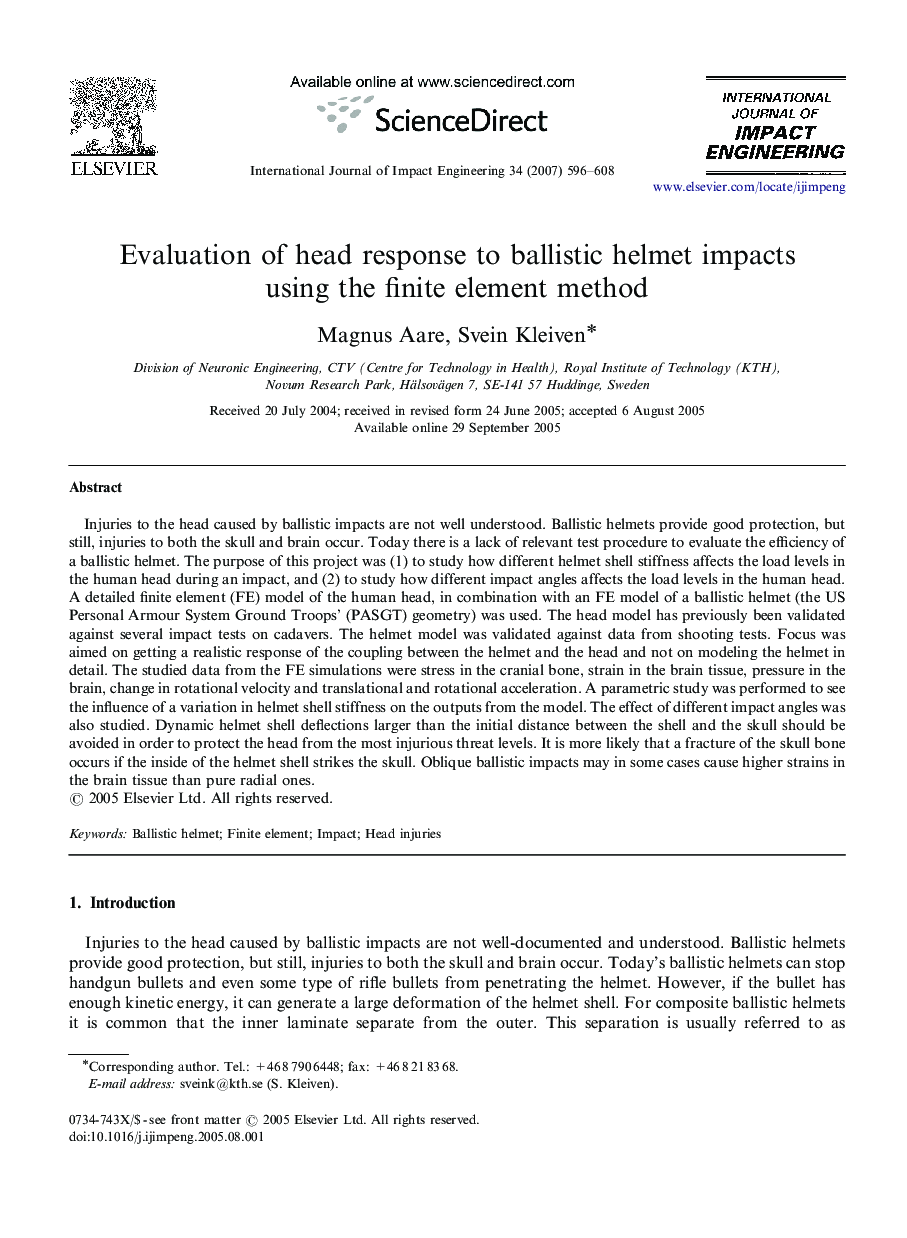| Article ID | Journal | Published Year | Pages | File Type |
|---|---|---|---|---|
| 783832 | International Journal of Impact Engineering | 2007 | 13 Pages |
Injuries to the head caused by ballistic impacts are not well understood. Ballistic helmets provide good protection, but still, injuries to both the skull and brain occur. Today there is a lack of relevant test procedure to evaluate the efficiency of a ballistic helmet. The purpose of this project was (1) to study how different helmet shell stiffness affects the load levels in the human head during an impact, and (2) to study how different impact angles affects the load levels in the human head. A detailed finite element (FE) model of the human head, in combination with an FE model of a ballistic helmet (the US Personal Armour System Ground Troops’ (PASGT) geometry) was used. The head model has previously been validated against several impact tests on cadavers. The helmet model was validated against data from shooting tests. Focus was aimed on getting a realistic response of the coupling between the helmet and the head and not on modeling the helmet in detail. The studied data from the FE simulations were stress in the cranial bone, strain in the brain tissue, pressure in the brain, change in rotational velocity and translational and rotational acceleration. A parametric study was performed to see the influence of a variation in helmet shell stiffness on the outputs from the model. The effect of different impact angles was also studied. Dynamic helmet shell deflections larger than the initial distance between the shell and the skull should be avoided in order to protect the head from the most injurious threat levels. It is more likely that a fracture of the skull bone occurs if the inside of the helmet shell strikes the skull. Oblique ballistic impacts may in some cases cause higher strains in the brain tissue than pure radial ones.
